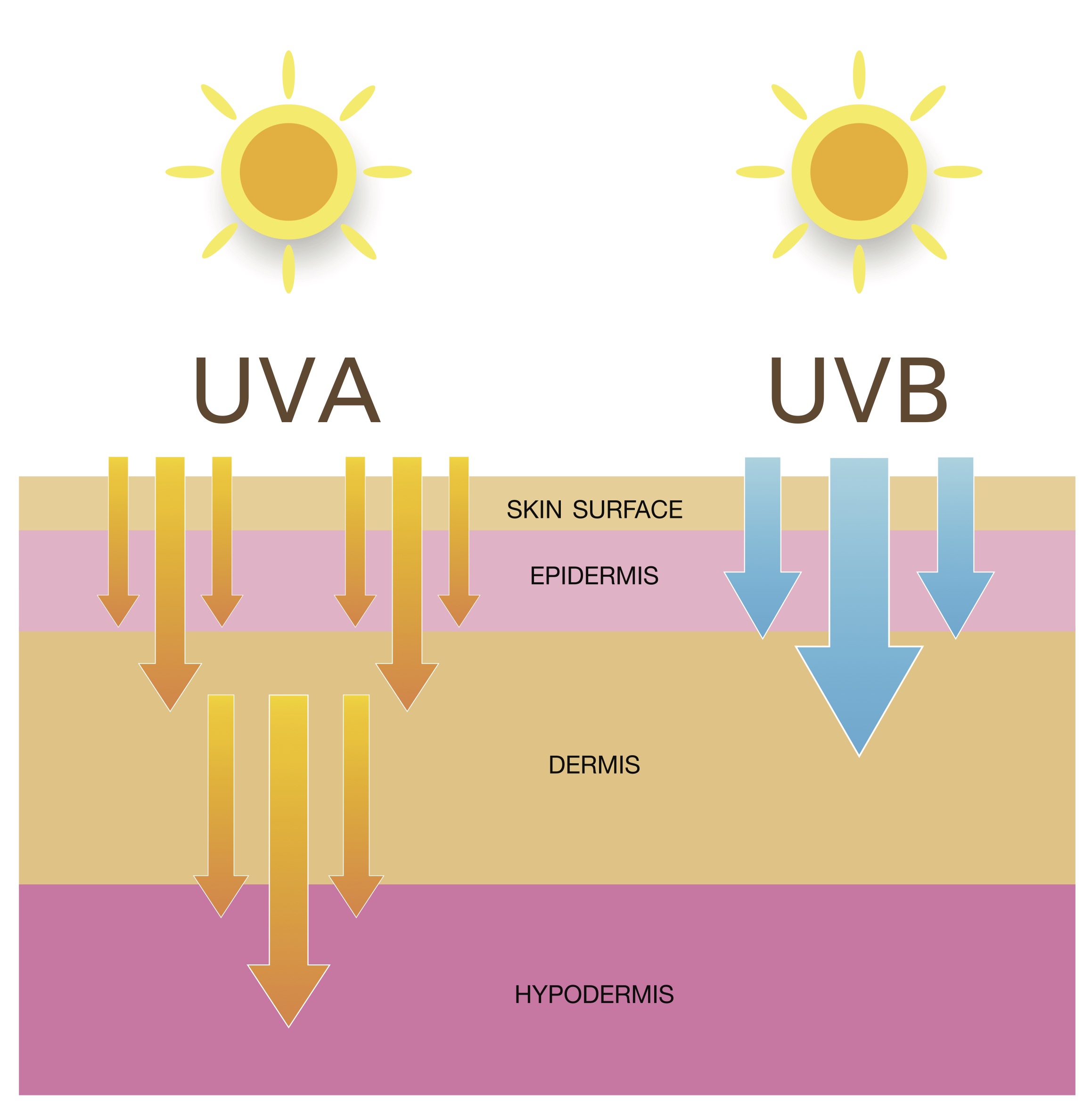Perhaps the most cardinal rule of basic skin care is the daily use of sunscreen. It’s a way of life for many sun-conscious Americans, especially those prone to hyperpigmentation, which is problematic in melanin-rich skin yet affects all skin tones. Every dermatologist counts sunscreen use as a must, and for years, it’s always been about the sun protection factor (SPF) to gauge how effective a sunscreen is. But some—not all—of what we know about traditional sunscreen is changing. While standard formulations are still valuable and beneficial, research points to tinted sunscreen as the best line of defense against visible light courtesy of colored pigments.
Visible Light 101

There is both ultraviolet light on the electromagnetic spectrum, which the sun emits, and visible light, which also comes from the sun, television and computer screens, overhead lightbulbs, and other devices. Although there are three types of UV light, UVA (aging rays) and UVB (burning rays) are of greatest concern. Equally damaging to the skin is visible light; hence all the recent focus and awareness of blue light protection.
“Blue light, or visible light, is the part of the light spectrum that produces long-lasting hyperpigmentation in darker-skinned individuals,” says dermatologist Dr. Michael Kurzman. “The light induces the formation of a protein complex that causes the production of melanin, which is responsible for the darker discoloration.”
The Ingredients that Make a Difference
Traditional sunscreens tend to leave a white cast on the skin, whereas others employ nanoparticles for an invisible finish. And for as much as standard SPFs can do to protect the skin against UV rays, they still don’t offer up much, if any, protection against visible light.
Basically, for any sunscreen (tinted or not) to protect against visible rays, the product must be visible on the skin. The more pigments in a formulation, the more visible it is on the skin. So, technically, because tinted sunscreens are more detectable on the skin, they are better at blocking out damaging visible rays.
Within mineral-based tinted sunscreen formulations are zinc oxide and additional pigments, including iron oxides and titanium dioxides. As Dr. Kurzman explains, iron oxide gives protection against visible light in addition to UVA and UVB rays. Visible light filters, like iron oxide and titanium dioxide, protect the skin by leaving a tint behind on the skin, similar to how foundation and other makeup can temporarily darken the skin’s tone.
In addition, when tinted pigments sit on the skin’s surface, they add an extra layer of protection against blue light that more traditional forms of sunscreen can’t deliver. “The minerals physically block and reflect the blue light,” adds Dr. Kurzman. And for those who suffer from redness, rosacea, and melasma, tinted varieties are a must since they limit these skin conditions by thwarting visible light exposure.
Tinted sunscreens are also great for those prone to redness, rosacea, and melasma since the colored pigments can provide a camouflaging effect.
How to Find the Best Match
 To find the best match for your skin, test a few and see what works and blends best with your natural skin tone. Also, don’t forget that warmer weather can bring about more pigment production within the skin (due to more sun exposure), so your skin may match better with a darker formula at certain times of the year.
To find the best match for your skin, test a few and see what works and blends best with your natural skin tone. Also, don’t forget that warmer weather can bring about more pigment production within the skin (due to more sun exposure), so your skin may match better with a darker formula at certain times of the year.
You’ll also want to look for a formulation with an SPF of at least 30.
Reapplication applies whether wearing a tinted sunscreen or a traditional version. As Dr. Kurzman explains, all sunscreens break down over time, so even tinted sunscreens should be reapplied every two hours for complete protection.
So if you’re sitting at home working or reading this from your computer or smartphone, go and swap your standard go-to sunscreen for a tinted version.




